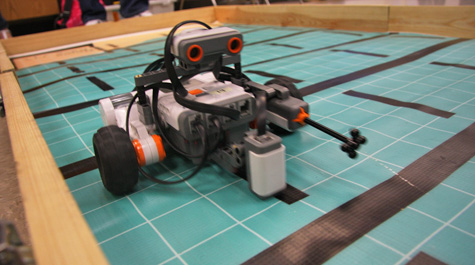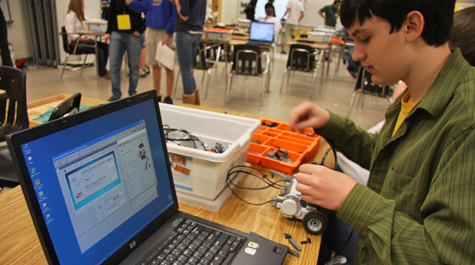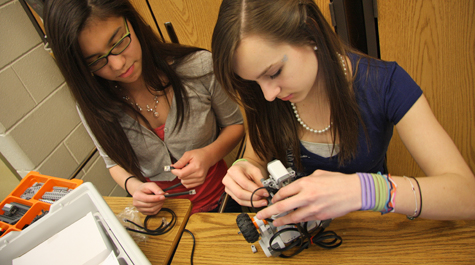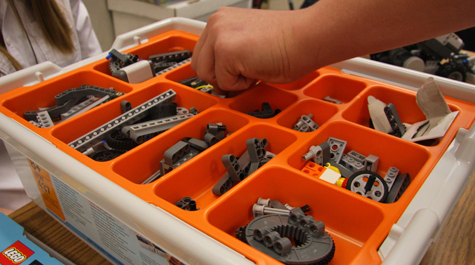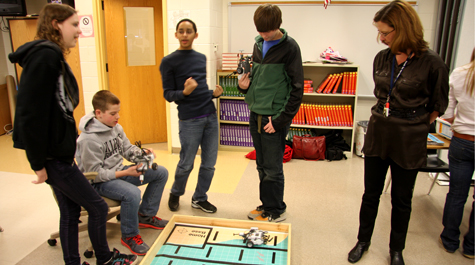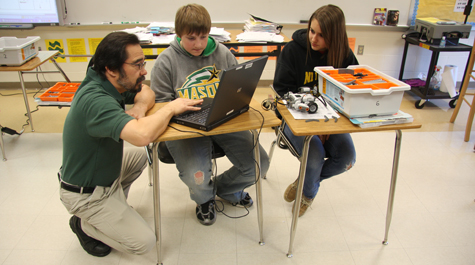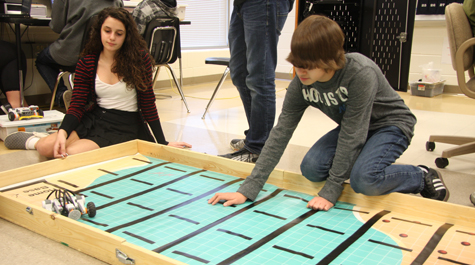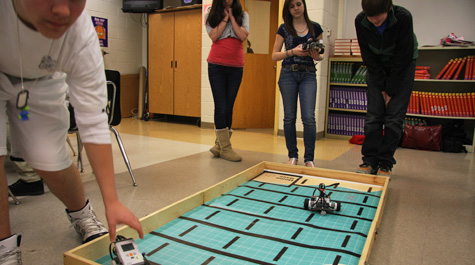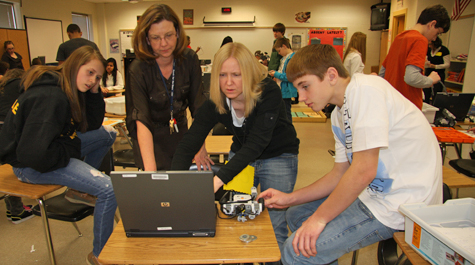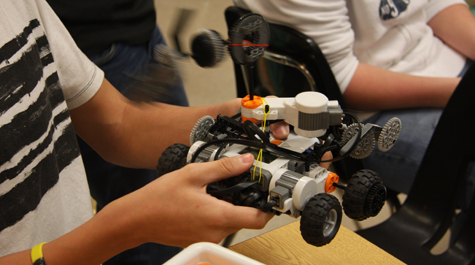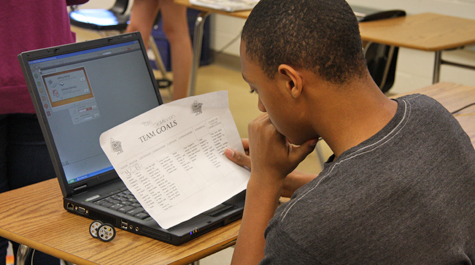Alliance gets middle schoolers interested in STEM careers
A group of eighth-grade students huddled around a rectangular box on the floor of their classroom and anxiously watched as the robot they had designed and programmed navigated its way around the perimeter.
As the rolling robot made its final turn and headed back to the section labeled “home base,” the students cheered, knowing that victory was near. Others in the classroom looked on with their own robots in hand, hoping their calculations would prove as accurate.
The recent morning of building, programming and testing robots at Ni River Middle School in Spotsylvania, Va., is a direct result of an initiative at the College of William and Mary that seeks to get middle-school students interested in science, technology, engineering and math careers.
The STEM Education Alliance, which is part of William & Mary’s School of Education, provides training to both teachers and professional engineers and scientists who are paired up to later serve as co-teachers in the classroom. Funded by the National Defense Education Program (NDEP), the alliance also provides instructional materials, professional development opportunities, and school counselor training, as well as summer academies for students. Staff members from the alliance annually visit classrooms to see the program in action.
{{youtube:medium|k5O-CPWe9_Q}}
Project Coordinator Jessica Taylor, who observed the class in action at Ni River, said that the program constantly evolves based on what they see working – or not working – in the classrooms.
“We find new areas we should focus on, plus areas we didn’t even think about,” she said.
Visiting the schools also give alliance members an opportunity to know their audience a little better.
“I like to see what’s popular with the kids, what’s peaking their interest, based on the things that they are carrying,” she said. “This is the group we’re trying to reach.”
Research shows that students lose interest in the sciences during middle school, and that is why the alliance focuses on that age range, Taylor noted.
Since its inception in 2004, the alliance has worked with seven school districts in the Northern Virginia area and scientists and engineers from the Naval Surface Warfare Center Dahlgren Division in Dahlgren, Va.
Since going through the alliance’s training program, Dianne Clowes, chair of the science department, and math teacher Brenda Kennedy have been paired with Teiji Epling, a Navy science and technology liaison to the Missile Defense Agency, at Ni River.
“We want it to be a strong relationship between (teachers and scientists/engineers), so it’s important that they go through training together,” said Taylor.
The alliance currently teaches participants two scenario curriculums: a coral reef scenario for seventh graders and a landmine scenario for eighth graders.
Clowes said that the landmine scenario is incorporated into a nine-week curriculum in which students not only eventually build mock mine-sweeping robots but also learn about a variety of tangential science topics, including water testing.
For the robot-related portion of the curriculum, teams of students must learn how to build and program their own robots, using a kit manufactured by Lego. The robots are put through a series of tests as the students build their knowledge – from simple movement challenges to finding metal discs under the surface of the testing area.
“I just like watching the kids figure out how to get things done,” said Epling, whose son attends William & Mary.
Clowes, who has participated in the program for about six years, said she’s gotten a lot from it, and it has inspired her to go back to school for her master’s degree. She and others at the school were also so impressed with the results that they created their own version of the program for their sixth-grade students.
Student Jaire George, 13, said that he has long been interested in architectural engineering and that this experience has just amplified that interest.
“It’s been very fun,” he said.
Student Carlos Sequera, 13, has also enjoyed the curriculum, particularly the programming aspect of it.
In fact, it may have changed the direction of his future.
“Before this, I didn’t really know a lot about science,” he said. “Now, I think I will look for something in the tech field.”














